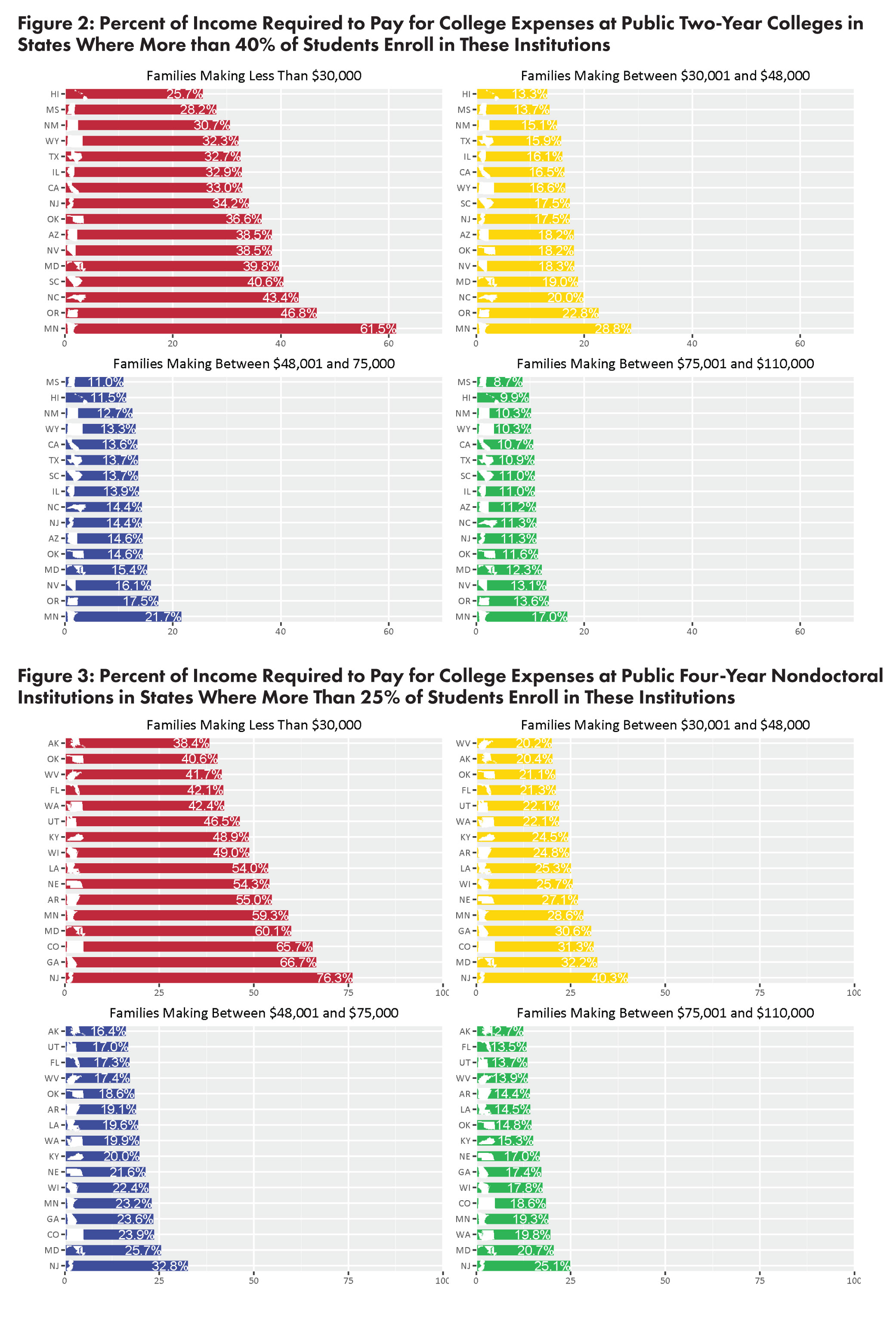Even community colleges are getting less affordable, study shows
We’ve written previously about how college overall has gotten more expensive, and even though financial aid has reached record levels, it still hasn’t been enough to make up the difference for most families, particularly low-income ones.
And a new study from the Institute for Research on Higher Education at the University of Pennsylvania confirms that college has become less affordable overall, with even community colleges becoming out of reach for many students.
Families now pay a greater percentage of income for college
According to The Hechinger Report, community college costs, like those of public and private 4-year colleges, have risen rapidly, as has the cost of living overall, while wages for low- and middle-income families have remained stagnant. This means that families are paying a higher percentage of their income to send their kids to college than ever before.
The charts below show the percentage of income families at various income levels now pay for community college in states where at least 40% of students attend these institutions, as well as the percentage of income families at various income levels now pay for 4-year public colleges in states where 25% of students enroll in these schools.

Community and public 4-year colleges have become much less affordable for low- and middle-income students in most states.
Paying a larger chunk of the family income on college has particularly devastating effects for lower income families, the study says.
As the proportion of college costs to income has risen, many students are forced to opt out of college altogether, or end up dropping out due to the financial burden.
According to the data, most full-time, low-income students would need to work more than 20 hours a week to afford even a community college—a workload experts say makes it all but impossible for them to successfully complete a degree.
Affordable options for low-income students
There are, however, some affordable alternatives for low-income students, the report said.
College costs, financial aid and availability of colleges can vary widely by state and region. Some states offer more in the form of need-based aid to qualifying families, and community colleges in some states are lower than others.
For example, as you can see in the charts above, a family in Mississippi making between $30,001 and $48,000 would pay 13.7% of their income to send their child to a community college, while a family in Minnesota making the same amount would pay over double that percentage of income, at 28.8%.
And states such as Tennessee and California have worked to keep tuition low or even introduced programs for free community college tuition for residents.
But, as The Hechinger Report points out, tuition makes up only a third of what students have to pay. Adding room, board, fees, books and supplies on top of that can put costs out of reach for many students.
Making college more affordable for all
It’s no secret that rising college costs are a large problem across all levels of higher education.
While community colleges still offer a clear value, particularly for students who intend to transfer to a 4-year college later on, they remain a significant investment, particularly for low- and middle-income families.
We help families and students reduce their college costs while avoiding significant student debt. Our affordable rates offer a fantastic value for families of all income levels–particularly since we can help save your family thousands on college.
If you’d like to learn more about how we can help you make college more affordable and maximize your financial aid, call Rick and Andy at 1-888-234-3907 or fill out this form.
affording college, college affordability, college costs, community college, financial aid consulting
